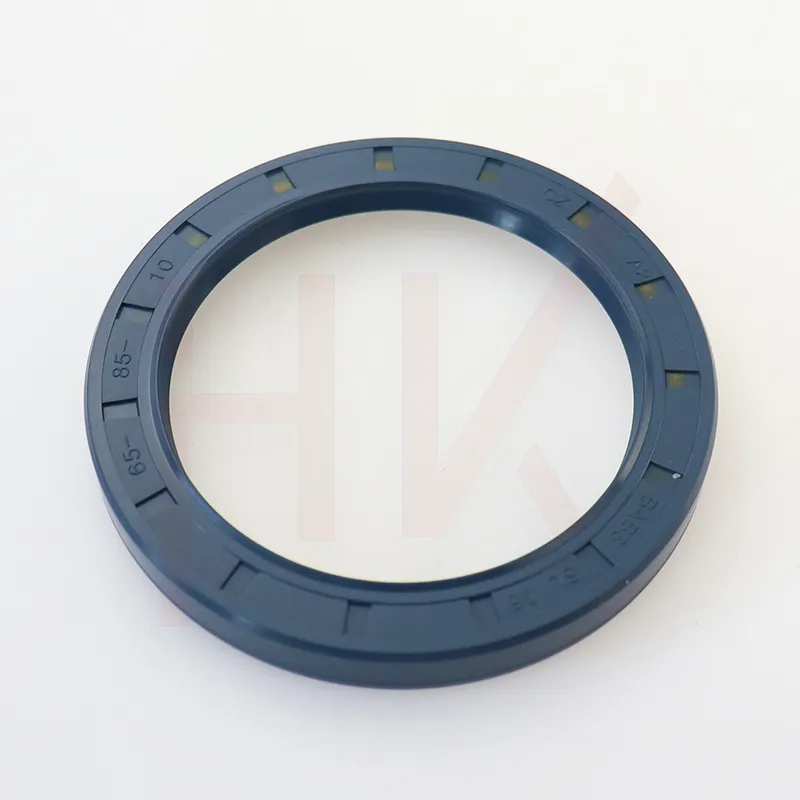ડીસેમ્બર . 04, 2024 09:30 Back to list
hydraulic shaft seal
Understanding Hydraulic Shaft Seals Key Components for Effective Fluid Control
Hydraulic systems are integral to a variety of industries, from automotive to aerospace, providing the necessary power to perform tasks that would otherwise be impossible. At the heart of these systems lies an essential component known as the hydraulic shaft seal. This article delves into the importance, types, applications, and maintenance of hydraulic shaft seals, highlighting their role in ensuring effective fluid control and system performance.
What is a Hydraulic Shaft Seal?
A hydraulic shaft seal is a mechanical component designed to prevent the leakage of hydraulic fluids between the rotating shaft and the stationary housing of a hydraulic system. These seals are crucial for maintaining system integrity, efficiency, and safety, as they help to control the pressurized fluid that drives numerous hydraulic functions. Without effective sealing, hydraulic fluid can leak out, leading to reduced system performance, increased wear and tear, and potential system failure.
Importance of Hydraulic Shaft Seals
The primary function of hydraulic shaft seals is to retain hydraulic fluid within the system while preventing contaminants from entering. This is vital for the following reasons
1. Efficiency Hydraulic systems rely on pressurized fluid to function effectively. A leak can lead to a drop in pressure, causing reduced performance and efficiency.
2. Protection Against Contaminants Hydraulic systems can be susceptible to contamination from dirt, dust, and other particles. Seals prevent these contaminants from entering the system, ensuring the fluid remains clean and the system functions optimally.
3. Safety Fluid leaks can pose hazards in industrial settings, leading to slips, equipment damage, or environmental concerns. Effective sealing helps mitigate these risks.
4. Maintenance Reduction By preventing leaks and contamination, hydraulic shaft seals extend the life of the hydraulic fluid and the components of the hydraulic system, ultimately reducing maintenance costs.
Types of Hydraulic Shaft Seals
There are several types of hydraulic shaft seals, each designed for specific applications and requirements. The most common types include
hydraulic shaft seal

1. Lip Seals These are the most widely used seals in hydraulic applications. They consist of a flexible lip that exerts pressure against the shaft to create a seal. Lip seals are versatile and can handle various pressures and fluid types.
2. U-Cups U-cup seals have a shape resembling the letter 'U' and are particularly effective at containing fluid under pressure. They are known for their ability to provide a tight seal and are commonly used in reciprocating applications.
3. V-Rings These are used in applications where axial movement is present. V-rings offer self-adjusting capabilities and can adapt to shaft wear, making them suitable for dynamic environments.
4. O-Rings O-rings are circular seals that can fit into a groove to prevent fluid leakage. While not always used in high-pressure applications, they are popular for static sealing as they are easy to manufacture and cost-effective.
Applications of Hydraulic Shaft Seals
Hydraulic shaft seals are used in a diverse range of applications, including
- Construction Equipment Heavy machinery like excavators and bulldozers rely heavily on hydraulic systems, making effective sealing crucial for performance and safety. - Automotive Systems Hydraulic seals are essential components of braking systems, steering, and suspension systems. - Industrial Machinery Many manufacturing processes utilize hydraulic systems, necessitating the need for reliable seals to ensure long-term operation. - Aerospace Hydraulic systems in aircraft, including landing gear and control systems, depend on robust sealing solutions to ensure operational safety.
Maintenance of Hydraulic Shaft Seals
To maximize the lifespan and effectiveness of hydraulic shaft seals, regular maintenance is essential. This includes
- Regular Inspections Routinely check for signs of wear, damage, or leaks. Early detection can prevent more significant issues. - Fluid Quality Management Ensure hydraulic fluids are clean and suitable for the application to minimize contamination and damage to seals. - Temperature Control Monitor operating temperatures; extreme heat can degrade seals, reducing their effectiveness.
Conclusion
Hydraulic shaft seals are critical components that play a vital role in the efficiency and safety of hydraulic systems. Understanding their importance, types, and maintenance needs can help industries optimize their hydraulic operations, prevent costly downtimes, and enhance system longevity. As technology evolves, ongoing innovations in sealing solutions will continue to improve efficiency and drive advancements in hydraulic systems worldwide.
-
Unlocking the Potential of Hydraulic Systems with Essential Sealing Solutions
NewsAug.06,2025
-
Unleash the Power of Your Hydraulic Systems with Our Premium Seal Kits
NewsAug.06,2025
-
Specialized Hydraulic Seal Kits for Breakers, Pistons, and Presses
NewsAug.06,2025
-
Revitalize Hydraulic Systems with Premium Repair and Seal Kits
NewsAug.06,2025
-
Fortify Your Cylinders with Premium Sealing Solutions
NewsAug.06,2025
-
Elevate Hydraulic System Reliability with Specialized Seal Kits
NewsAug.06,2025
-
TCN Oil Seal Metal Ring Reinforcement for Heavy Machinery
NewsJul.25,2025
Products categories
















